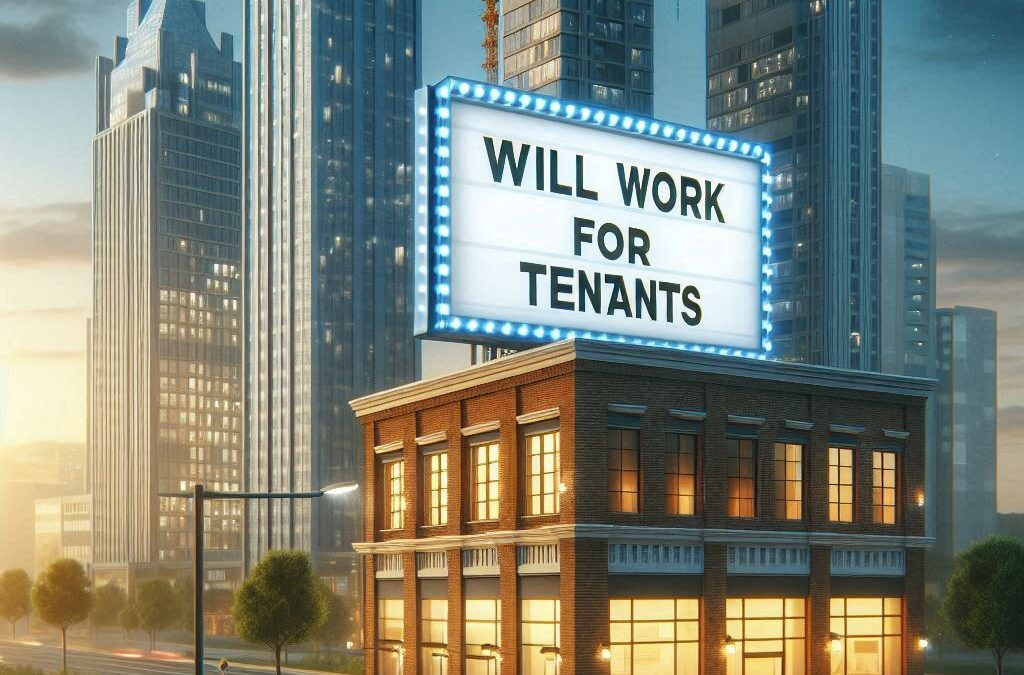The U.S. commercial real estate (CRE) sector is teetering on the edge of a major crisis, with a convergence of economic pressures threatening to destabilize a significant portion of the market. As the industry braces for impact, experts and policymakers are asking: What can be done to mitigate the damage and navigate the challenges ahead?
According to an analysis by The Conference Board using MSCI Real Assets data, more than $1 trillion in CRE loans are set to mature over the next two years. This looming debt overhang presents a formidable challenge for CRE owners, particularly those with limited capital reserves or portfolios heavily concentrated in commercial real estate. As these loans mature, property owners will face the daunting task of refinancing or selling assets in an increasingly difficult market.
Recent interest rate hikes by the Federal Reserve have significantly increased borrowing costs, making it more expensive for CRE owners to service existing debt or secure new financing. At the same time, property values are declining, driven by rising operating costs and shifting demand patterns. As a result, many property owners may struggle to refinance their loans or sell their properties at valuations that would allow them to pay off their debts. These factors—rising interest rates, declining property values, and a looming debt wall—could push many CRE owners into financial distress.
Adding to the sector’s woes is a seismic shift in office space demand triggered by the COVID-19 pandemic. Remote work, once a temporary solution, has become a permanent fixture of the corporate landscape. This shift has led to declining occupancy rates and increased vacancy levels in office properties, further eroding their value. As demand for office space continues to evolve, property owners who once relied on steady rental income from office tenants now find themselves in a precarious position. This sector-specific downturn compounds the broader challenges facing the CRE market.
A combination of government intervention, regulatory adjustments, and fiscal policy measures will be required to steer the commercial real estate market through this potential crisis.
One potential solution is government intervention, which could come in several forms. Quantitative easing, where central banks inject liquidity into the financial system by purchasing government bonds and other securities, could lower interest rates, making borrowing more affordable and encouraging lending. The government could also guarantee a portion of loans made by banks, reducing the risk for lenders and incentivizing them to extend credit to CRE owners. This approach could be particularly effective in supporting specific sectors, such as small businesses or housing. Additionally, direct capital injections into financial institutions could strengthen their balance sheets, allowing them to increase lending to CRE owners in need of refinancing.
Regulatory adjustments can also play a crucial role in stabilizing the CRE market without stifling economic growth. Temporarily lowering banks’ capital requirements could free up funds for lending, providing much-needed liquidity to the CRE market. While easing lending standards must be done cautiously, it could temporarily increase credit availability for CRE owners facing refinancing challenges. The government might also incentivize banks to lend to specific sectors or borrowers through targeted lending programs, offering tax breaks, or other financial incentives.
Fiscal policy measures could also be leveraged to support the CRE market and broader economic growth. Tax cuts for businesses and individuals would increase disposable income, boosting spending and stimulating demand for commercial real estate. Furthermore, government investments in infrastructure could create jobs and stimulate economic activity, indirectly supporting the CRE market by increasing demand for commercial spaces.
History offers some guidance on managing similar crises. During the 2008 financial crisis, the Troubled Asset Relief Program (TARP) saw the U.S. government inject capital into banks to stabilize the financial system. Central banks worldwide also implemented quantitative easing programs to stimulate economic growth in the aftermath of that crisis.
The road ahead for the U.S. commercial real estate market is fraught with challenges. However, it is possible to mitigate the impact of the impending crisis by employing a balanced and multifaceted approach that combines government intervention, regulatory adjustments, and fiscal policy measures. The effectiveness of these interventions will depend on their timely and well-coordinated implementation, as well as the ability to adapt to evolving economic conditions. With careful management, the commercial real estate sector can weather the storm and emerge stronger on the other side.


Recent Comments